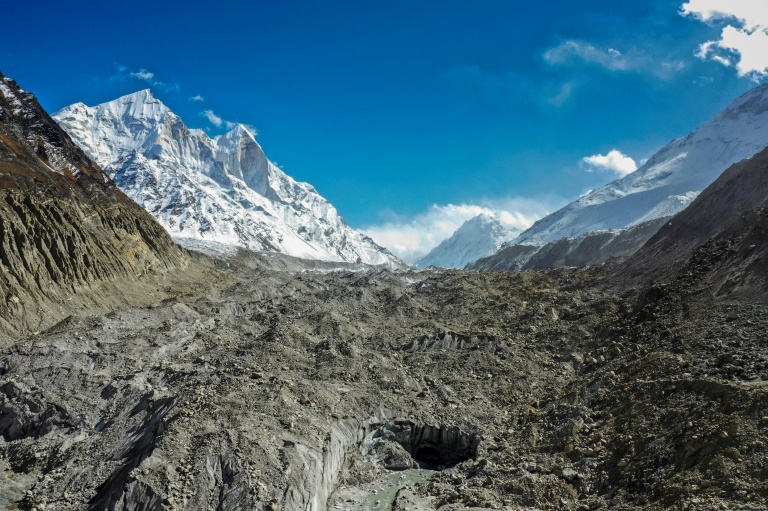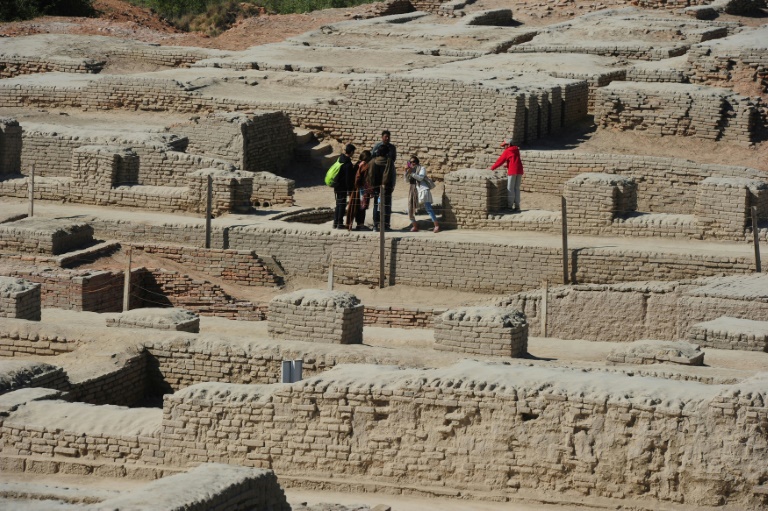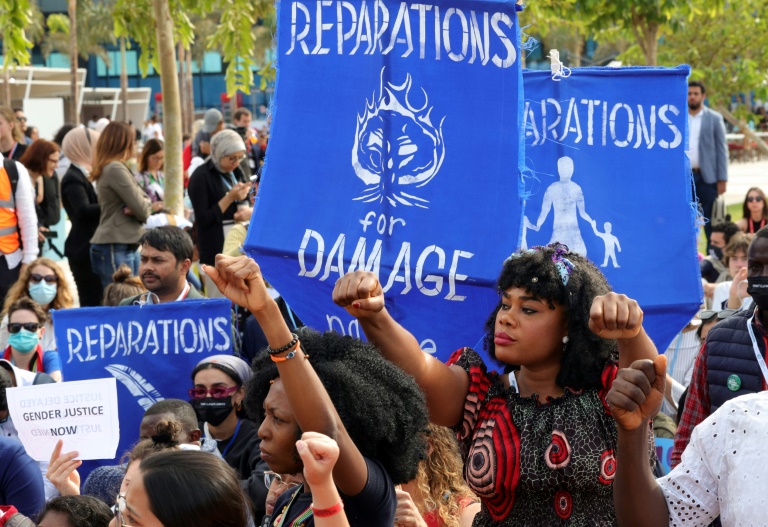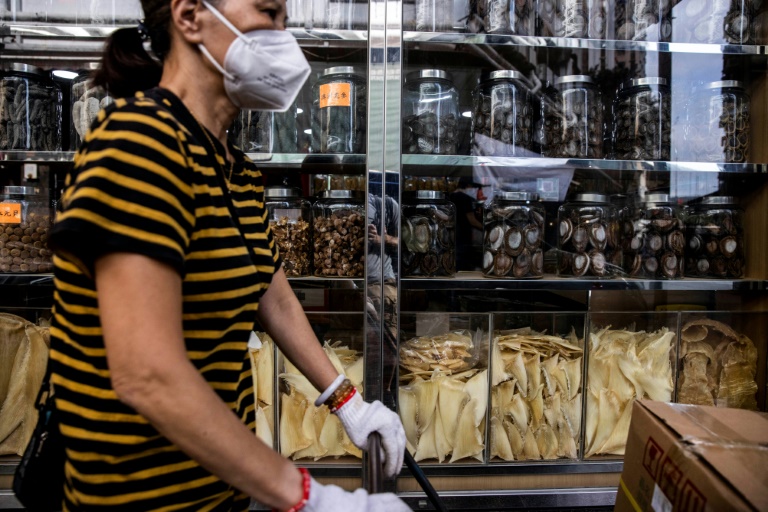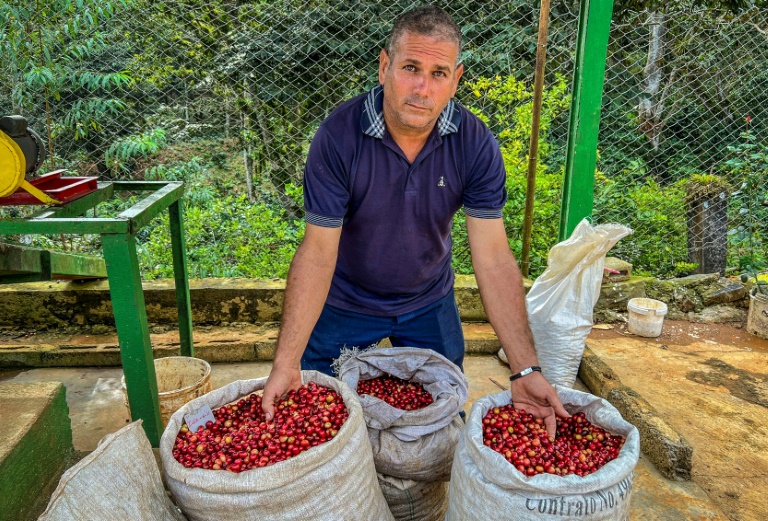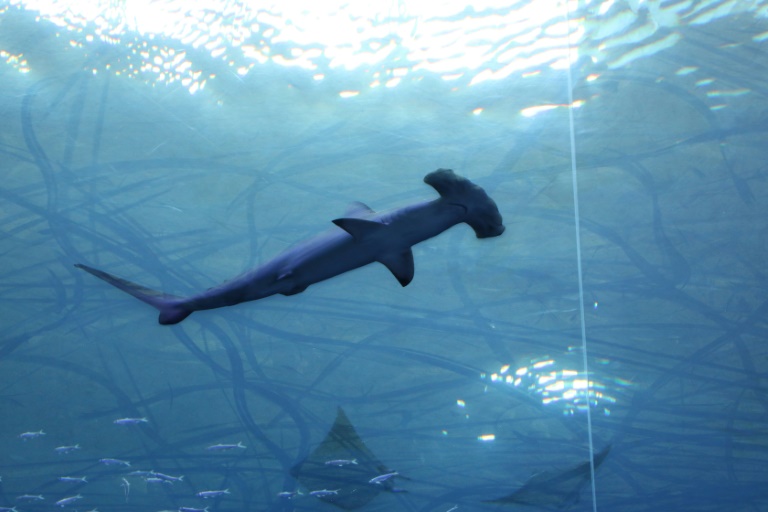Fraught UN climate talks enter endgame with EU 'final offer'
Glaciers are retreating due to climate change
UN climate talks entered their last day Friday with rich and developing nations deadlocked over creating a fund for countries devastated by the affects of global warming — and the EU warning its offer was final.
Representatives from nearly 200 countries have gathered at the COP27 in Egypt for two weeks with the aim of driving forward action on climate change as the world faces a worsening onslaught of extreme floods, heat waves and droughts.
The daunting list of urgent tasks includes finding agreement — and funds — for the emissions cuts needed to limit average warming to 1.5 degrees Celsius from pre-industrial levels, which scientists say is a safer guardrail to avoid the most dangerous impacts.
For many developing countries — and small island states most threatened by sea level rise — the defining issues at the conference is money for the “loss and damage” caused by climate change.
A cascade of climate-driven extremes in recent months — from floods in Pakistan and Nigeria to heatwaves and droughts across the world — have shone a spotlight on the ferocious impacts of a warming world for developing nations that are also struggling with debts and surging inflation.
The summit in the Red Sea resort of Sharm el-Sheikh went into the final hours of official negotiating time with a range of key issues outstanding. These include funding for countries to prepare for future climate impacts — a priority for African nations.
With talks expected to spill into overtime, disagreement over creating a specific loss and damage fund has proved critical.
The European Union proposal outlined late Thursday has indicated that the bloc, previously fearful of open-ended climate damages liability, have “shifted significantly”, said Rachel Cleetus, lead economist at the Union of Concerned Scientists’ climate programme.
But she said all eyes were now on the United States and China, the world’s top two polluters, fresh from a thaw in their climate relations after a meeting between Presidents Joe Biden and Xi Jinping earlier this week in Bali.
“It’s crunch time. There’s no time anymore for the US to sit on the sidelines. They have to come out with what their position is to show that they’re being constructive,” she told AFP.
Cleetus added that China should also make its position clear, particularly on the issue of whether it would contribute to such a fund and pledge not to draw from it.
“We think China and the US can really unlock this in these last 24 hours,” Cleetus said.
– ‘This is our final offer’ –
Earlier in the week, the “Group of 77,” a bloc of 134 “developing countries” that includes China, proposed creating the loss and damage fund at the COP27 meeting, with other details to be agreed later.
European Commission Vice President Frans Timmermans told reporters on Friday that the EU offer had two “very important” conditions that differ from the G77 proposal.
He said the fund should be for “the most vulnerable” nations and the money should come from a “broad funder base” — code for countries including China that have become wealthier since they were listed as developing countries in 1992.
“I have to say this is our final offer,” he said.
“This is where the (EU) member states can find an agreement and I have to thank all of them for for the courage to go this far. But this is it.”
Timmermans said he explained the EU proposal to US delegates who were “very interested in seeing” that reaffirming the need to step up efforts to cut emissions to reach the 1.5C target be reflected in the conclusions.
Developing nations have been relatively united in calling for the loss and damage fund at this COP. Some small island states said they had discussed walking out if they do not get progress.
But the AOSIS coalition of small island states has also indicated it wants to see China, India and other major polluters contribute.
– ‘Blame game’ –
A draft outline of positions on loss and damage published on the COP27 website late Thursday included some elements of the main proposals, providing a starting point for negotiations to begin in earnest.
But a separate 10-page draft of the COP27 final statement released Friday morning only had a placeholder for a “funding arrangement” — signalling significant work still to be done.
The statement also keeps a line reaffirming the aspirational goal of limiting warming to 1.5C, a key demand from the US and EU.
UN chief Antonio Guterres called for countries to break the deadlock late Thursday, warning that “the blame game is a recipe for mutually assured destruction”.

